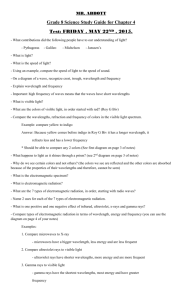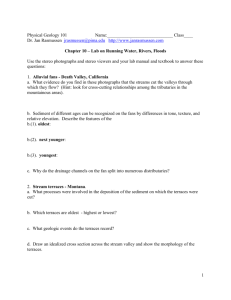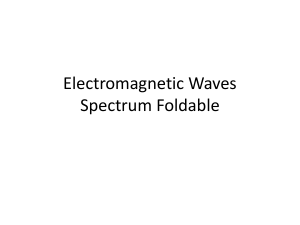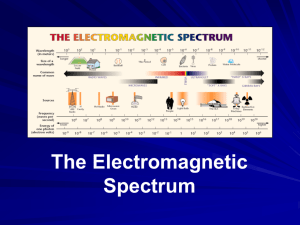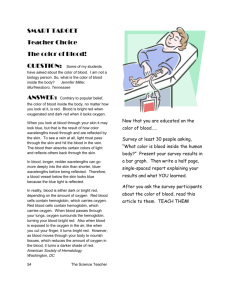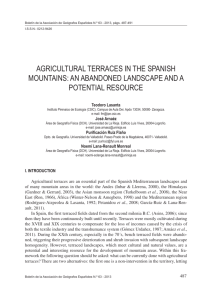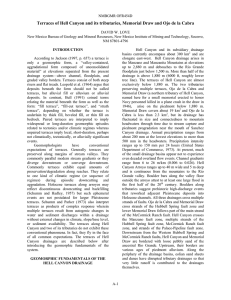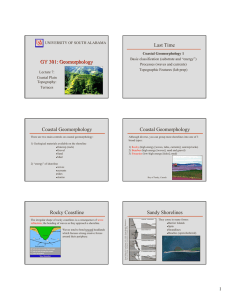Optics - Blue Morpho
advertisement
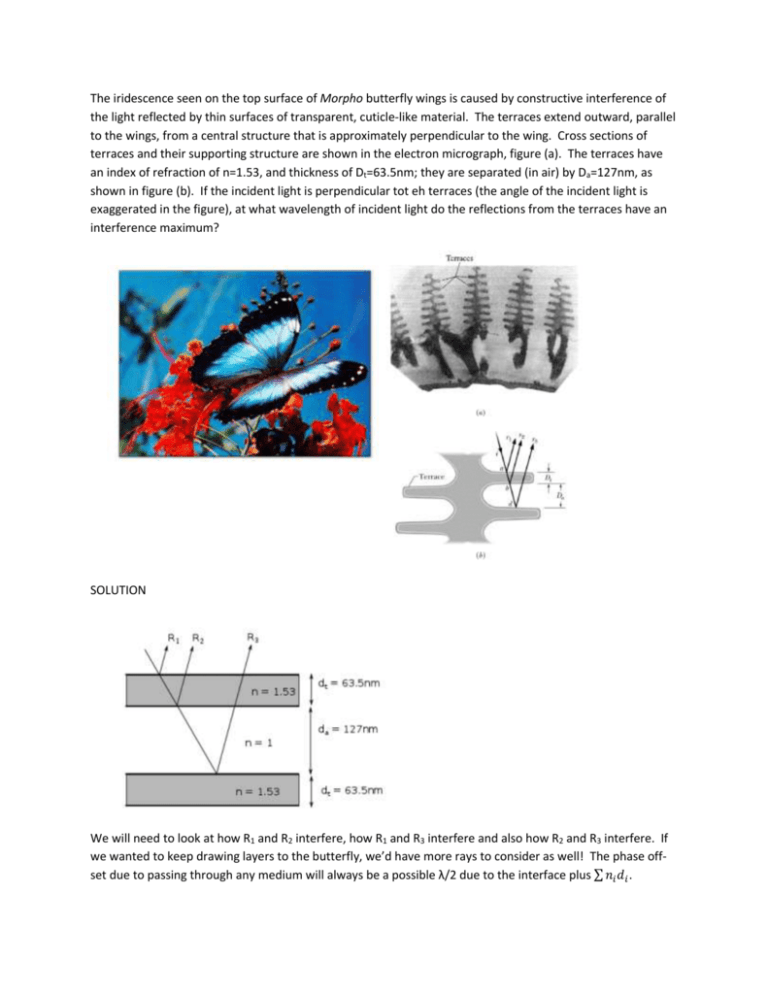
The iridescence seen on the top surface of Morpho butterfly wings is caused by constructive interference of the light reflected by thin surfaces of transparent, cuticle-like material. The terraces extend outward, parallel to the wings, from a central structure that is approximately perpendicular to the wing. Cross sections of terraces and their supporting structure are shown in the electron micrograph, figure (a). The terraces have an index of refraction of n=1.53, and thickness of Dt=63.5nm; they are separated (in air) by Da=127nm, as shown in figure (b). If the incident light is perpendicular tot eh terraces (the angle of the incident light is exaggerated in the figure), at what wavelength of incident light do the reflections from the terraces have an interference maximum? SOLUTION We will need to look at how R1 and R2 interfere, how R1 and R3 interfere and also how R2 and R3 interfere. If we wanted to keep drawing layers to the butterfly, we’d have more rays to consider as well! The phase offset due to passing through any medium will always be a possible λ/2 due to the interface plus ∑ 𝑛𝑖 𝑑𝑖 . Remember that the distances will be twice the thicknesses given since a ray travels through and reflects back (traveling through a second time) any layer. First consider the R1 and R2 rays and how they interfere – R1 has a half phase shift due to the relative values of the indices of refraction at the interface, R2 has a shift from passing through the first layer. If these rays are in phase, the shifts must be equal or be some integer number of wavelengths. We can express this as the equation: 𝜆 = 2𝑛𝑡 𝑑𝑡 + 𝑏𝜆 2 Where b is that integer number of wavelengths that will allow for constructive interference. Solving for the possible wavelengths yields: 𝜆𝑏 = 4𝑛𝑡 𝑑𝑡 1 − 2𝑏 Plugging in numbers, we can find: λ0=389nm, λ1=130nm, λ2=78nm, etc. These wavelengths are not in the visible region of the spectrum, so we’ll move on to considering the interference of other rays. R1 and R3: Again, R1 has the phase shift due to the interface, R3 also has that 180⁰ phase shift due to the interface as well as the phase change due to passing through two layers of the butterfly’s wing – this gives us the following equation: 𝜆 𝜆 = + 2𝑛𝑡 𝑑𝑡 + 2𝑛𝑎 𝑑𝑎 + 𝑏𝜆 2 2 Solving for the possible wavelengths yields: 2 𝜆𝑏 = (𝑛𝑡 𝑑𝑡 + 𝑛𝑎 𝑑𝑎 ) 𝑏 Plugging in numbers, we can find: λ1=448nm, λ2=224nm, λ3=149nm, etc. Again, not all of these are in the visible region of the spectrum. R2 and R3: We’ve already worked out the phase shifts for each of these rays, so we can just write a new equation: 2𝑛𝑡 𝑑𝑡 = 𝜆 + 2𝑛𝑡 𝑑𝑡 + 2𝑛𝑎 𝑑𝑎 + 𝑏𝜆 2 Solving for the possible wavelengths yields: 𝜆𝑏 = 4𝑛𝑎 𝑑𝑎 2𝑏 − 1 Plugging in numbers, we can find: λ1=508nm, λ2=169nm, λ3=102nm, etc. We see, therefore, two interference maxes at 448 nm (violet) and 508 nm (blue-green), giving the blue Morpho its characteristic color.

